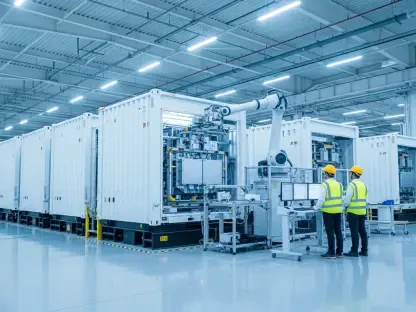Recent events have brought attention to the heated dispute between the federal government and various states concerning funds meant for building electric-vehicle (EV) charging stations. California, along with 15 other states, initiated legal action against the Trump administration, alleging that billions intended for EV infrastructure were unjustly withheld. This clash raises significant questions about the future of clean energy policies and the balance of power between federal and state authorities. Experts and stakeholders weigh in on the implications, revealing a complex web of opinions and challenges in driving the transition to renewable energy despite political roadblocks.
Insights Into the Federal vs. State Dynamics in Energy Policy
Experts describe the current situation as a pivotal moment in federal-state relations, where previously aligned goals have become disjointed due to the Trump administration’s reversal of Biden-era clean energy initiatives. Energy policy analysts highlight the intricacies involved in dismantling established pathways, suggesting that the withdrawal of funds represents a broader attempt to resurrect conventional energy sources like coal. The push from states to regain financial support for EV infrastructure emphasizes a struggle to maintain forward momentum in energy transition amid such reversals.
Adding depth to the conversation, experts scrutinize the federal government’s approach and its ramifications on clean energy advancements. Data indicates a steady decline in carbon emissions associated with increased availability of renewable technologies, aligning with Biden’s directives. However, Trump’s policies divert attention back toward fossil fuels, sparking debates on the efficacy of such redirections. As discussions evolve, the tug-of-war between federal influence and state autonomy continues to define the nation’s energy landscape, with states asserting their need for flexibility in policymaking.
The Debate at the Core: Fossil Fuels Versus Renewables
Controversies surrounding fossil fuels and renewables remain a central theme within energy policy discussions. Environmental experts advocate for renewables as a necessary cornerstone in combating climate change, citing the essential role of EV charging networks in reducing transportation emissions. The shift back toward coal and oil under Trump’s guidance poses significant questions about future sustainability strategies and whether they align with climatology and environmental objectives.
Industry leaders acknowledge both opportunities and pitfalls in the ongoing energy transition. The chance to innovate within the EV space by expanding charging infrastructure presents growth potential and aligns with states’ clean energy commitments. Conversely, the uncertainty caused by fluctuating policies may hinder progress, requiring stakeholders to navigate debates around the efficiency and adequacy of conventional energy sources.
Emerging Trends in Energy Transition and Policy Adaptation
The resurgence of coal, emphasized by Trump’s policies, draws varied reactions from different states, each adapting uniquely to these changes. Environmental economists note regional differences in energy reliance, where states with strong renewable commitments feel the impact more acutely. This dynamic interaction challenges assumptions related to energy transition timelines, pushing policymakers to re-evaluate the broader implications of supporting traditional energy sectors.
In examining strategic moves involving EV infrastructure within the wider environmental context, urban planners foresee a shift where localized efforts may drive future energy developments. Conversations around long-term strategies in the renewables market suggest an eventual realignment, concentrating on sustainable energy while acknowledging the adaptability needed in policy frameworks.
Key Lessons and Recommendations for EV Infrastructure Advancement
Learning from the disputes between federal and state energy policy, specialists propose critical insights into advancing clean technology initiatives. Recommendations include fostering collaborations that ensure transparent communication between government tiers and aligning regulatory mechanisms to support consistent funding pools. Practical steps involve enhancing investor confidence in renewable technologies through stable policy environments and promoting incentives to boost public adoption of clean energy alternatives.
Implementing and adapting successful strategies calls for commitment from stakeholders focused on innovation and environmental stewardship. By embracing tested methods while anticipating future policy shifts, those invested in energy progression aim to continue defending clean technology undertakings against short-term diversions.
Envisioning Future U.S. Energy Policy
Reflecting on the ongoing drama between federal and state energy policies, there is recognition of the substantial impact these conflicts have on broader challenges in transitioning toward sustainable energy solutions. The necessity for cooperative frameworks emerges as a thematic element, urging policymakers to transcend political divides to support energy reforms essential for long-term environmental health.
In summary, a holistic approach toward harmonizing differing interests remains vital in shaping the future of U.S. energy policy. As stakeholders consider actionable solutions, the focus centers on bridging divides and establishing coherent pathways that honor both federal ambitions and states’ rights in driving meaningful energy advancements.









